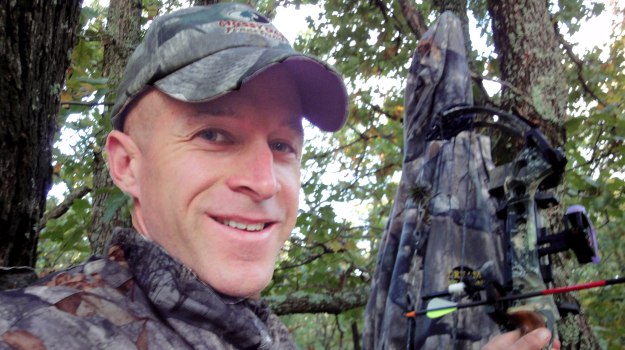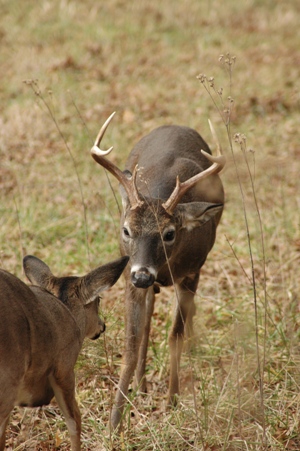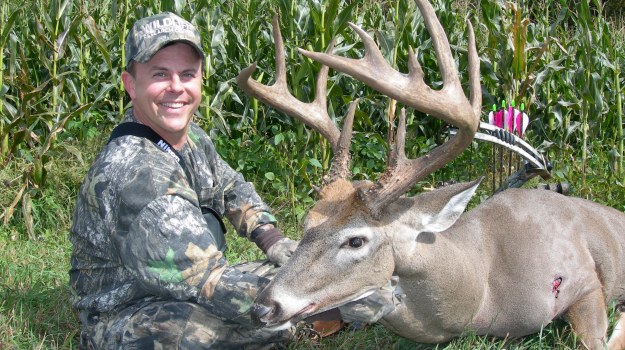
The Secret to Taking Deer on Public Lands with ProSaffer Mark Davis
Editor’s Note: Mark Davis of Sperry, Oklahoma, a fire fighter for the Oklahoma City fire department, has been a member of the Mossy Oak Pro Staff for 7 years. He’s been deer hunting for 31 years, since he was about 9-years old.
I hunt deer three or four different places here in Oklahoma. Most of the time I go to southeastern Oklahoma and hunt what we call the mountains. I also travel to the southern part of the state, to a place we call Sulphur Davis. I primarily hunt public lands, because it’s far-less expensive than hunting private lands. I probably would have to spend $1,000 to $2,000 to lease a small piece of private land to hunt deer. Public land has produced a tremendous number of deer for me over the years and some really-nice bucks. There are thousands and thousands of acres of public land I hunt, including the Three Rivers and Honobia areas. Deep Fork is southwest of where I live.
I’m often asked what the real secret is to taking deer on public lands. The answer is really simple. Go to the most-difficult places to reach on any public land you hunt. For instance, Deep Fork doesn’t allow ATVs or motorized vehicles. To get into and out of this WMA, you have to hike. This area is surrounded by marsh lands and large cliffs with no road access, even on the back side of the region. This is the type of place I like to hunt, because to survive, deer have to go to regions where there aren’t any hunters.
 Three Rivers, another public area that I hunt, also has some very-difficult places to reach. Most hunters aren’t willing to walk an hour or two before they start hunting, because they fear success. They worry, “If I take a big buck an hour or two hours’ walk from my vehicle, I’ll never be able to get him out.” The other reason is fear of getting lost and not being able to find their way out of the woods after dark. These concerns are to my advantage, because I’ll go where they won’t go and do what they won’t do to enjoy really-good deer hunting.
Three Rivers, another public area that I hunt, also has some very-difficult places to reach. Most hunters aren’t willing to walk an hour or two before they start hunting, because they fear success. They worry, “If I take a big buck an hour or two hours’ walk from my vehicle, I’ll never be able to get him out.” The other reason is fear of getting lost and not being able to find their way out of the woods after dark. These concerns are to my advantage, because I’ll go where they won’t go and do what they won’t do to enjoy really-good deer hunting.
When I leave my vehicle, I carry a day pack, my climbing tree stand and my bow. In my day pack, I’ll have protein bars, light snacks, several bottles of water, fruit and a knife. I plan to be successful every day I hunt and always leave a portable deer cart in my vehicle to help me to get my deer and all my equipment out quickly and easily. If I take a deer, I hike back to get my cart and use it to haul out the deer and my equipment. With this system, I get plenty of good exercise, and I don’t fear being successful. I don’t harvest a deer on every outing, but I do usually see deer every time I go hunting.
Some of the areas I hunt have old logging roads. At Deep Fork, there is an oil-field road with locked gates to prevent any vehicles from passing. When I’m entering a new area, the first thing I do is use Google Earth to study aerial photos of the land. I often can spot food trees and bedding areas that I believe will hold deer. I also look for the easiest way for deer to travel between feeding and bedding sites and places where I can set-up a tree stand with good visibility. After I’ve done my aerial reconnaissance, I go to the spots I plan to hunt before the season and scout. Once I get an hour or two away from the vehicle, I use Bright Eyes reflective thumbtacks to mark the trail down low to my tree stand. I think trail cameras are a valuable asset, but I don’t put up any on public land for fear that another hunter may want to borrow them when I’m not there.
Tomorrow: Mossy Oak’s Mark Davis Says to Go Into the Woods Before Daylight and Come Out After Dark






























